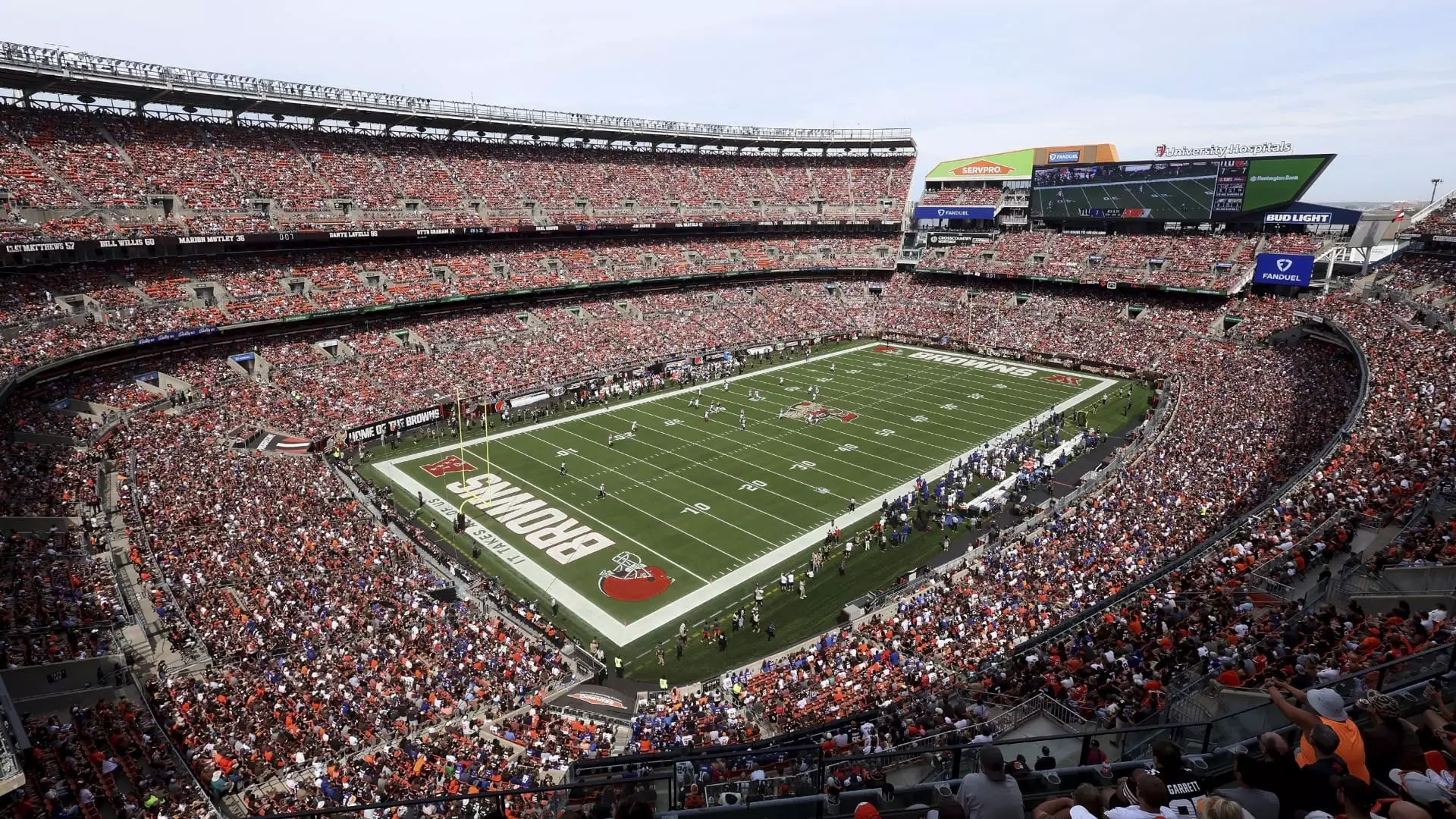The Cleveland Browns, a storied franchise in the National Football League (NFL), have announced a significant transition that has left many fans and city officials reeling. Moving away from their iconic Lake Erie location, the Browns are set to build a new domed stadium in Brook Park, Ohio, as confirmed in a press release from Cleveland Mayor Justin Bibb. This decision has not only caused a stir among fans but has also raised critical questions about the implications of such a move for the city of Cleveland.
The ramifications of the Browns’ decision extend beyond mere geographical changes. Mayor Bibb stated that the departure would result in a staggering economic loss estimated at $30 million annually for Cleveland, a financial hit that will surely resonate across various sectors within the community. Local businesses depending on game-day traffic, hotels, and restaurants could experience a dramatic decline in revenue, which in turn would ripple out to affect the city’s overall economy.
Bibb’s harsh critique of the Haslams’ decision underscores the deeper impact this move could have on the city’s identity as a sports town. He accused the ownership of prioritizing profit over community enrichment, suggesting that the potential for upgrading the existing facility into a more modern venue was overlooked in favor of a new, costly project. While the Browns ownership argues for the financial viability of a new dome, the long-standing tradition of the team in Cleveland cannot be overlooked. The matchless atmosphere of game days at a lakeside stadium might soon become a nostalgic memory for many.
The emotional reaction from fans encapsulates the essence of the NFL—an intricate bond between the team and its supporters. Historically, NFL franchises may thrive on relocating or rebranding to capitalize on market opportunities, but this often alienates dedicated fan bases. By opting for a new facility outside of Cleveland, the Haslam family has initiated a conversation about the loyalty and connection that cities develop with their teams.
Although a state-of-the-art domed stadium can enhance the overall fan experience with upgraded amenities, year-round events, and increased capacity, the question remains: at what cost? The community ties forged over decades will undoubtedly face strain as local engagement dissipates with the team’s relocation. The nostalgia of attending games in a revered old stadium holds significant value—something that a new facility, regardless of its modernization, may not replicate.
From a financial perspective, the Browns’ ownership has justified their move with the promise of a $2 billion private investment in the Brook Park project, alongside anticipated economic development. They argue that a domed venue offers the potential for diverse revenue streams through non-football events, thereby increasing the franchise’s profitability. The Browns state that their chosen location will produce enough revenue to cover public bond debt service without taxpayer dollars, presenting a façade of civic responsibility.
However, the economics of sports are rarely straightforward, and the viability of alternative funding models raises questions about their commitment to the greater Cleveland area. Will this “major economic development project” truly benefit the community, or will it simply result in a further shift of focus onto profit generation? The fans who cherish the authenticity of their local team may perceive these projections as mere numbers without acknowledging the human cost of such corporate decisions.
As the city of Cleveland holds out hope for renegotiations should the Brook Park venue fail to materialize, the prospect of losing a team is bittersweet. While the Haslams explore their options in Brook Park, possibly revitalizing their economic prospects, they must remain cognizant of the long-standing heritage and emotional fabric woven through the Browns’ history in Cleveland.
For now, the NFL landscape in Ohio stands at a crossroads. The Browns’ relocation illustrates a growing trend within professional sports—a shift towards profitability over tradition, often leaving fans and communities to grapple with the aftermath of such significant changes. As the seasons advance, the question lingers: will Cleveland’s community spirit endure, or will the move create an irreversible chasm between one of its most beloved franchises and its passionate fanbase? The coming months will reveal the answers.

Leave a Reply